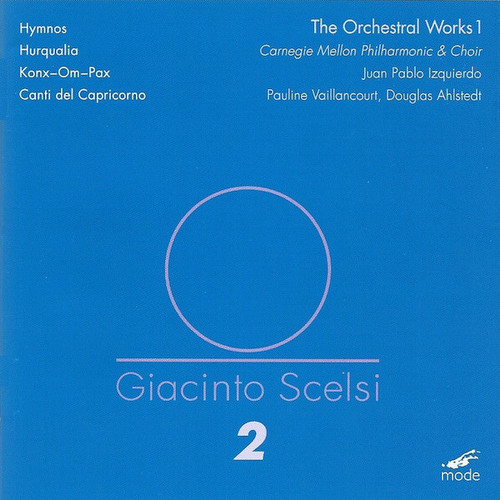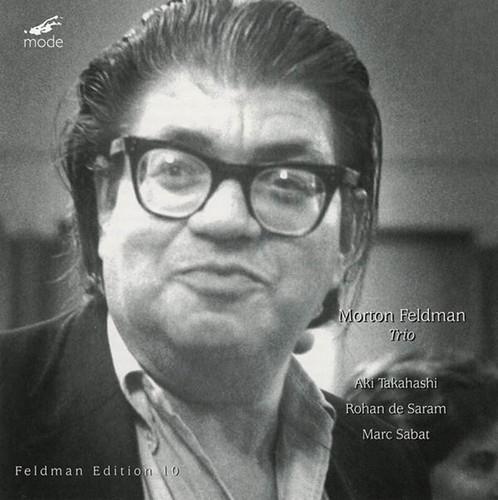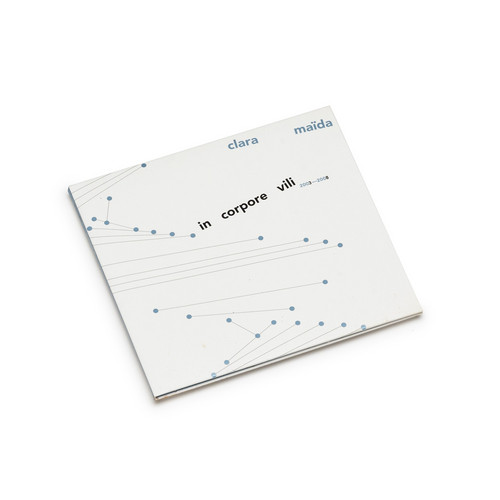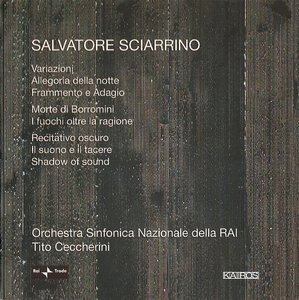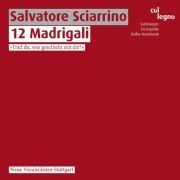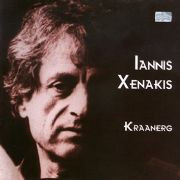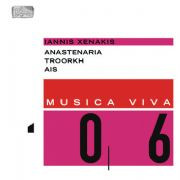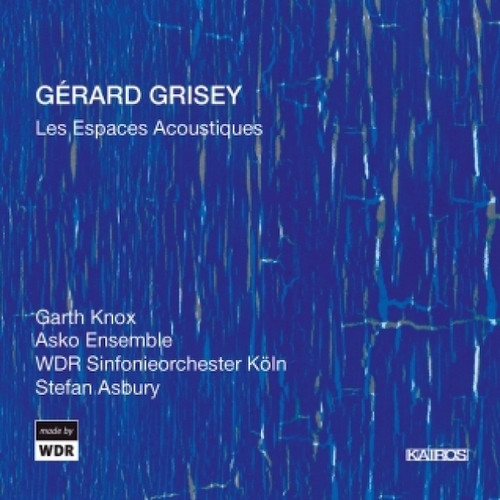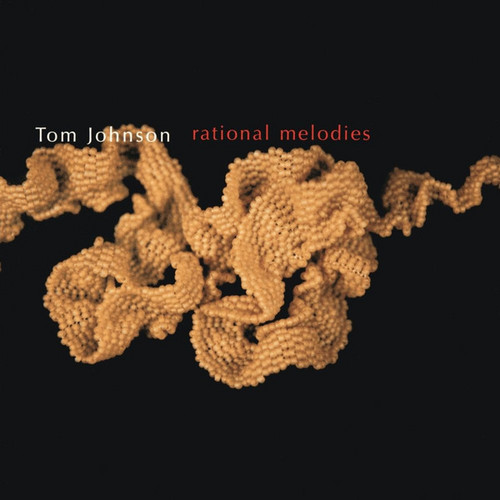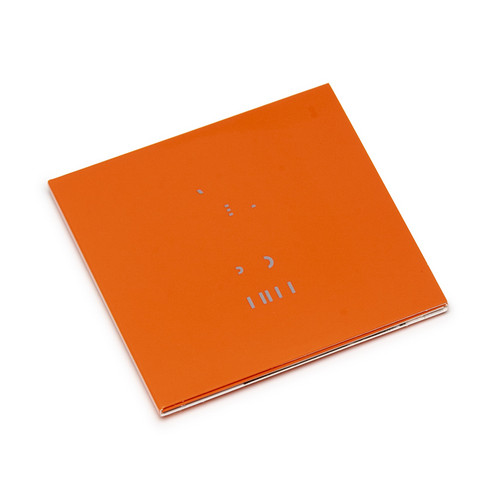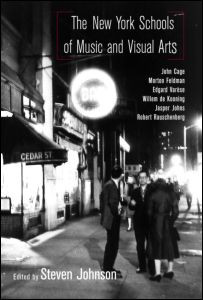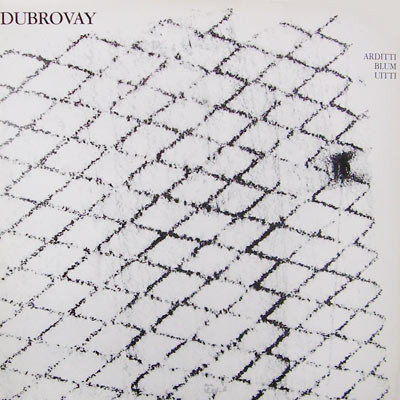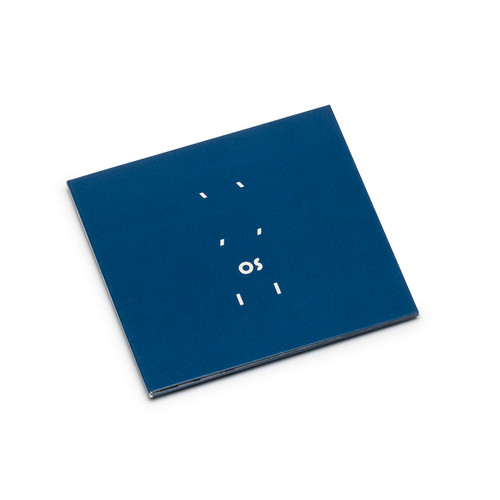The orchestral works 1
'Hymnos' (1963) for organ & 2 orchestras. 'Hurqualia' (1960) for large orchestra. 'Konx-Om-Pax' (1968) for large orchestra & chorus. The Carnegie Mellon Philharmonic & Concert Choir. Juan Pablo Izquierdo, conductor. 'Canti del Capricorno' for voices & instruments. Pauline Vaillancourt, soprano. Douglas Ahlstedt, tenor. Volume 2 in Mode's scelsi Edition presents three of his rarely heard and recorded orchestral works, vividly captured in outstanding sound. Hymnos' large orchestra is divided antip…
Trio
The expansive length of Morton Feldman’s Trio (1 hr., 45 min., 22 sec.) requires a new approach to listening, which takes scale, the physical experience of sound, and novel uses of musical memory into consideration. With his delicate manipulation of musical materials, Feldman blurs the listener’s sense of time as their musical memory struggles to distinguish between past and present sounds - listeners are free to lose themselves in the beauty of each musical moment. Aki Takahashi and Rohan…
In Corpore Vili
Just arrived, this is the newest edition RZ release focused on a radical electronic (+ Ensemble) music by Clara Maida "During the first years of my compositional research, my goal was to mark out, in my music, the flux of the psychic energy at work in the unconscious and its underlying structure. At the time, I was going through an analytical process favouring access to this unconscious activity, and my readings in the field of psychoanalysis were helping me in the effort to elaborate a musical …
(Old school) James Tenney
The internationally acclaimed “hilarious releases” [vital weekly] of zeitkratzer records will continue with the new series [old school]. The first two CDs, dedicated to the music of John Cage [zkr0009] and James Tenney [zkr0010] are now released together. The collaboration of zeitkratzer with William Bennett /Whitehouse [zkr0007], recorded live in 2009 in Marseille/France and Den Haag/Netherlands, will follow this summer. Later in 2010, the [old school] series will continue with two more release…
(Old school) John Cage
John Cage’s compositions have been part of zeitkratzer’s repertoire since the very first day. The pieces presented here justify zeitkratzer’s reputation as sound specialists. Avant-garde composer Cage is played in a conservative, precise and sensual way, apart from all philosophical ambitions, and hopefully as seductive as a Schubert quintet! The “Wire Magazine” acclaimed: zeitkratzer convinced us that Cage‘s music can still live with all its complexities, stripped of the debris of its ic…
Orchestral Works
“Orchestral Works” collects the best of the production of this Sicilian composer with eight pieces on 3 CDs: the box - entirely dedicated to Sciarrino - is the result of the collaboration between this musician and Rai Trade. "He searches for exeptional situations that throw the listeners back upon themselves. These can be deliberately designed to lead right to the edge of madness, but also to relaxed medidation. Just as silence counteracts the noise of everyday life, slowness is also a count…
12 Madrigali
Salvatore Sciarrino, in league with the Neue Vokalsolisten Stuttgart, embarks on the investigation of a new ecology of sound, through a form of polyphony reduced to chamber-music scale. The lyrics selected by the Italian composer are based on six haikus by the Japanese poet Matsuo Bashô (1644–1694). A comprehensive explanatory text on the production is contributed by Max Nyffeler. The world premiere of the work was recorded at the 2008 Salzburg Festival and is now made available on CD for the fi…
Music For Keyboard Instruments
This is the first recording of Xenakis‘ music for keyboard instruments realised by computer – unplayable by human hands! Realized by computer. 'Herma' for piano (1961); 'Mists' for piano (1981); 'Khoaï' for harpsichord (1976); 'Evryali' for piano (1973); 'Naama' for harpsichord (1984). Daniel Grossmann, MIDI programming. "This is the first recording of Xenakis' music for keyboard instruments realized by computer -- unplayable by human hands! The desire to hear a composition exactly as Xenak…
Kraanerg
Apart from a large orchestra, Kraanerg, composed in 1968/69, requires audio feeds of recorded parts played by the orchestra and of the results of the manipulation of electro-acoustical phenomena. “I do not work with basic building blocks. I start afresh every time,“ Xenakis once said. This statement may help explain the extremely independent sonic universe created afresh in his compositions again and again. In the same vein, he rejects any attempt to foist semantic patterns onto the music of Kra…
Orchestral works and chamber music
ESSENTIAL RELEASE: The impulsive and electrifying Ata (1987) was referred to as "a kind of shifting of the senses" by the composer. The task of sketching N’Shima (1975) was actually assigned to a computer, whereas Metastaseis (1953-54) is devoted to architecture; the composition was derived from the bases of calculation used for the pavilion for the Brussels World's Fair of 1958 and is famous in particular for its glissandos and thickening clusters. Ioolkos, written for Donaueschingen in 1996, a…
Musica Viva 06
"Musica Viva 06" is another excellent release from the German Col Legno label, which specializes in the avant-garde. This disc includes three live performances -- the original 1981 recording of "Ais," featuring the incredible baritone voice of Spyros Sakkas, a new recording of "Troorkh," a trombone concerto, from 2000, and (drumroll please...) the world premiere of "Anastenaria," also from 2000, with the inimitable Xenakis champion Charles Bornstein conducting. As it turns out, "Metastas…
Psappha; Rebonds A & B; Okho pour trois djembés
This amazing CD contains some of the great works for solo percussion by the authorities in the field of contemporary music. The performances and recording quality are both superb! Clearly all care and effort went into the recording and text however, the dual layered dvd /cd is in PAL format, and will require said player or a media transfer to see the studio footage and interview with Xenikas. Considering we spend much time searching for the "right music" to add to our collection, this disc…
Les Espaces Acoustiques
Gérard Grisey’s Les espaces acoustiques is a groundbreaking work which defies assumptions about what music “ought” to be. Not for nothing did the composer describe it as “a great laboratory”, exploring the way we listen.The “Acoustic Spaces” cycle, begun in 1974 and completed in 1985, consists of six instrumental works that may be played consecutively, since each acoustic space extends the previous one. The unity of the whole is based on the formal similarity of the pieces and on the two acousti…
Rational Melodies
I am particularly pleased, because the result is so different from the solo flute recording of Eberhard Blum and the solo clarinet recording of Roger Heaton. It is not just another interpretation, but a case where interpreters have added so much insight to the music that the music itself has grown. When I was composing this music around 1982, I really thought I was simply writing melodies, but now these little pieces, though remaining melodies, have become something much more, something I…
Sax Pax for a Sax
Classical world-folk style by Moondog joined with jazz timbers by The London Saxophonic: the amazing and original collaboration between two distinct way of music.
Klangregionen 1951-2007
German composer Josef Anton Riedl doesn’t have many releases to show for nigh on six decades of activity. Of his small handful of albums, all long out of print, the best known is a 1972 Wergo LP. The second half of the noughties saw a minor swell of interest in Riedl’s work – the Wergo album was given the Creel Pone CD-R bootleg treatment in 2005, and one of his compositions was included on the fifth volume of Sub Rosa’s Anthology Of Noise And Electronic Music series – but for the most part he r…
The New York Schools of Music and Visual Arts: John Cage, Morton
an amazing book that xplores the influences on the four musicians in the early 50s who, because of their deep interest in art, associated closely with the New York School of painters: Varese, Wolpe, Feldman and Cage. Musicians and artists have always shared mutual interests and exchanged theories of art and creativity. This exchange climaxed just after World War II, when a group of New York-based musicians, including John Cage, Morton Feldman, Earle Brown, and David Tudor, formed friendships wit…
Orchestral Works
Beautiful boxet with 5 CDs "It would be an understatement to say that Iannis Xenakis, who passed away nearly ten years ago, marked the whole second half of the 20th century. Whether or not assisted by computer, he built vast musical architectures, which diverge resolutely from what was being done at the time and is still being done: another world of sounds, combined according to a different, but never gratuitous, approach resulting in something magical. The listener is surrounded by sound, immer…
Arditti, Blum, Uitti
Long deleted, this is a Laszlo Dubrovay's 1988 LP with compositions for string quartet, bass flute and cello (performed by Frances Marie Uitti
Mondweiß
Recordings from the Elektronic Studio at the TU Berlin, the Studio of the Institut International de Musique Electroacoustique de Bourges, and at Patrick Kosk's own studio
